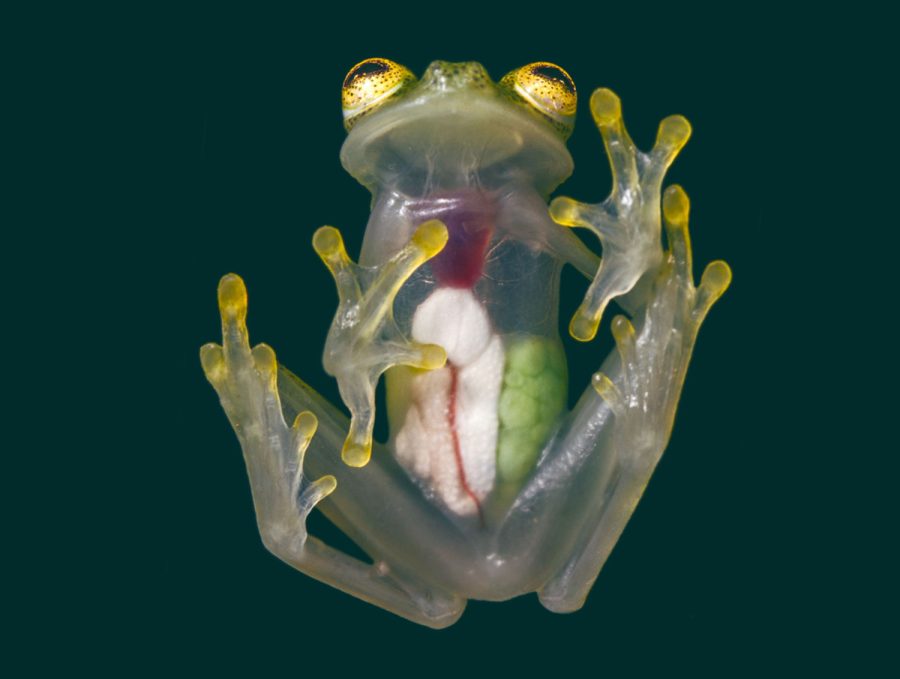Now You See Me, Now You Don’t
The Glass Frog’s organs are visible through its translucent skin.
January 23, 2023
Scientists have cracked the code to the Glass Frog’s unique ability to turn transparent.
Most Glass Frogs can be found in Central America, concentrated in Costa Rica, Ecuador and Panama. Glass Frogs were first discovered in the 1920s, with 149 species identified as recently as 2015. They are carnivores, eating insects like flies, crickets and moths. They will even eat other frogs if they can fit them in their mouths.
Glass Frogs are nocturnal, making them vulnerable to predators like snakes and birds. They have opaque green backs with translucent stomachs and legs. Their heart, liver and intestines can be seen through the body cavity. When their legs surround their bodies, the shape of their body is obscured. This is a phenomenon called edge diffusion, allowing them to better blend into leaves.
In 2022, scientists discovered that Glass Frogs have an extra camouflage mechanism. When they sleep, they have the special ability to store 89% of their red blood cells in their liver. Their liver contains crystal-lined sacs, which help to reflect incoming light. This combats the high light absorbency of red blood cells. Their livers can shrink and expand depending on the volume of blood cells. By sequestering their red blood cells, they’re able to become two to three times more transparent.
This skill is observable by the naked eye, but to figure out this mechanism scientists used an imaging technique called photoacoustic microscopy. Pigments absorb light, which produces heat. The increase in heat changes the pressure and creates sound waves. The microscopy detects the blood protein hemoglobin, which helped track the blood cells as they entered the liver.
The Glass Frog’s special skill may have major implications for the study of hematology. In most organisms, many blood cells in one area would create a dangerous clot. Blood clots block the flow in the blood vessels and cause complications like strokes and heart attacks. These frogs can condense their pool their red blood cells at will, with seemingly no negative effects. They’re still able to form blood clots when harmed. Studying the frogs may help discover a biological mechanism to prevent excessive bleeding without life-threatening clotting.





















